I want to amplify a rectangular signal coming from a microcontroller.
It goes from -3.3V to 3.3V and has frequency of 2kHz. It is modulated with a trapezoid signal, which means the modulating signal rises up linearly to +/- 3.3V, stays at +/- 3.3V and then falls again to +/- 0V. The rectangular signal oscillates in between.
The maximum output should be as high as 40V and 150mA. Is there an affordable "surface mount" solution?
I was thinking about an op-amp but there are none available which are capable of the power and just cost a few bucks each.
Here is a photo of the signal (the shape of the trapezoid signal is just drawn to make it more clear that the rectangular signal oscillates inside the shape):
